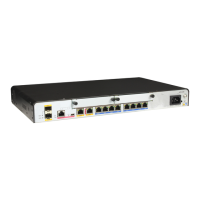------------------------------------------------------------------------------
PeerID TransportAddress DiscoverySource
------------------------------------------------------------------------------
2.2.2.2:0 2.2.2.2 GigabitEthernet1/0/0
3.3.3.3:0 3.3.3.3 GigabitEthernet2/0/0
------------------------------------------------------------------------------
TOTAL: 2 Peer(s) Found.
Run the display mpls ldp remote-peer command to view remote LDP peer information.
<Huawei> display mpls ldp remote-peer
LDP Remote Entity Information
------------------------------------------------------------------------------
Remote Peer Name : lsrc
Remote Peer IP : 3.3.3.9 LDP ID : 1.1.1.9:0
Transport Address : 1.1.1.9 Entity Status : Active
Configured Keepalive Hold Timer : 45 Sec
Configured Keepalive Send Timer : ---
Configured Hello Hold Timer : 45 Sec
Negotiated Hello Hold Timer : 45 Sec
Configured Hello Send Timer : ---
Configured Delay Timer : 10 Sec
Hello Packet sent/received : 61/59
Remote Peer Deletion Status : No
Auto-config : ---
------------------------------------------------------------------------------
TOTAL: 1 Peer(s) Found.
2.5 Configuring LDP LSPs
LDP can distribute labels to establish LSPs in an MPLS domain.
2.5.1 Establishing the Configuration Task
Before configuring LDP LSPs, familiarize yourself with the applicable environment, complete
the pre-configuration tasks, and obtain the data required for the configuration.
Applicable Environment
LDP is used to distribute labels on an MPLS network and establish LSPs automatically in the
situation where paths for the LSPs do not need to be specified and traffic engineering (TE) does
not need to be deployed on the MPLS network.
The number of LSPs that an LSR supports depends on the capacity and performance of the LSR.
A large number of LSPs probably lead to unstable LSR operation.
LSPs can be established based on eligible routes and a policy for triggering LSP establishment.
The LSP establishment policy filters out unqualified routes and allows LDP to use eligible routes
to establish LSPs and control the number of LSPs.
Policies for triggering the LSP establishment are used based on the following types of LSPs:
l Ingress or egress LSPs can be established based on the following policies:
– All static routes and IGP routes trigger LSP establishment.
– Labeled public network BGP routes to destination addresses with 32-bit masks trigger
LSP establishment. For the configuration procedure, see the chapter "BGP/MPLS IP
Huawei AR1200 Series Enterprise Routers
Configuration Guide - MPLS 2 MPLS LDP Configuration
Issue 01 (2011-12-30) Huawei Proprietary and Confidential
Copyright © Huawei Technologies Co., Ltd.
39

